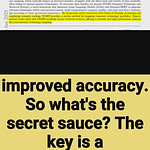FlashInfer makes LLM serving faster by smartly managing memory and adapting to different workloads.
FlashInfer introduces a unified attention engine that optimizes LLM serving through customizable templates, block-sparse storage, and dynamic scheduling, significantly improving inference performance.
29-69% inter-token-latency reduction vs Triton backend
-----
https://arxiv.org/abs/2501.01005
🤔 Original Problem:
LLM serving faces challenges with diverse workload patterns, varying input lengths, and hardware-specific optimizations. Current solutions implement specialized attention mechanisms, leading to maintenance overhead and potential inefficiencies.
-----
🔧 Solution in this Paper:
→ FlashInfer uses block-sparse format to handle KV-cache storage heterogeneity, enabling efficient memory access and reduced redundancy
→ A customizable attention template supports various attention variants through JIT compilation, allowing rapid adaptation to different configurations
→ Dynamic load-balanced scheduling algorithm adjusts to input changes while maintaining CUDAGraph compatibility
→ Integration with major serving frameworks like SGLang, vLLM and MLC-Engine ensures practical applicability
-----
🎯 Key Insights:
→ Block-sparse format with flexible block sizes effectively unifies diverse KV-cache patterns
→ JIT compilation enables customization without performance overhead
→ Load-balanced scheduling crucial for handling variable sequence lengths
→ Composable formats improve memory efficiency for shared prefixes
-----
📊 Results:
→ 29-69% inter-token-latency reduction vs Triton backend
→ 28-30% latency reduction for long-context inference
→ 13-17% speedup for parallel generation
→ Significant bandwidth and FLOPs utilization improvements










